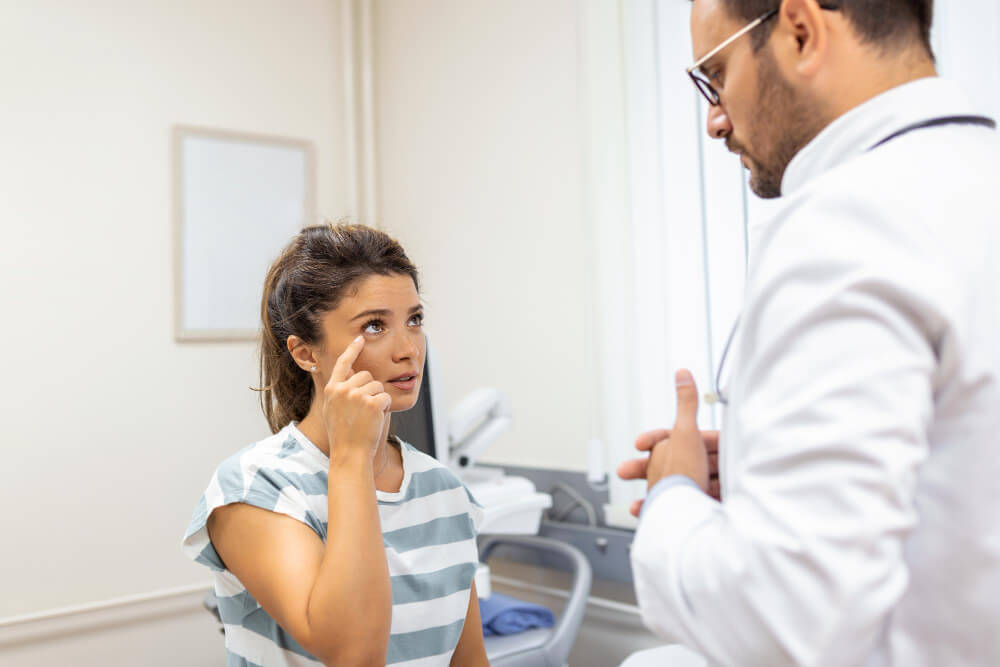The Unseen Link: Sleep Apnea and Eye Health
Sleep apnea, a condition characterized by interruptions in breathing during sleep, is a prevalent health issue with far-reaching consequences. While the effects on cardiovascular and respiratory health are well-documented, the connection between sleep apnea and eye health is a growing area of interest. This article delves into the potential mechanisms linking these two conditions, the associated eye problems, and the importance of comprehensive care.
The Complex Relationship Between Sleep Apnea and Eye Disease
The exact mechanisms by which sleep apnea contributes to eye problems are not fully understood, but several factors may play a role:
Chronic Inflammation Sleep apnea is associated with chronic inflammation throughout the body, including the eyes. Inflammation can damage delicate eye tissues and contribute to the development of eye diseases.
Oxidative Stress The repeated cycles of oxygen deprivation and reoxygenation during sleep apnea can generate harmful free radicals, leading to oxidative stress. This stress can damage eye cells and tissues.
Dry Eye Syndrome Sleep apnea can contribute to dry eye syndrome by disrupting the body’s natural sleep-wake cycle, which influences tear production.
Other Eye Conditions Some studies suggest a potential link between sleep apnea and other eye conditions, such as glaucoma and age-related macular degeneration, although more research is needed to confirm these associations.
Symptoms of Sleep Apnea and Eye Problems

Recognizing the symptoms of sleep apnea and eye problems is crucial for early diagnosis and treatment.
Symptoms of Sleep Apnea
- Loud snoring
- Choking or gasping during sleep
- Excessive daytime sleepiness
- Morning headaches
- Dry mouth or sore throat upon waking
- Restless sleep
- Mood disturbances
- Difficulty concentrating
Symptoms of Eye Problems
- Dry eyes
- Blurred vision
- Eye fatigue
- Sensitivity to light
- Redness or irritation
- Floaters
- Difficulty focusing
Diagnosing Sleep Apnea and Eye Disease
A comprehensive evaluation is essential to diagnose sleep apnea and any associated eye problems. This may involve:
- Sleep Study: A sleep study, or polysomnography, monitors breathing patterns, brain waves, heart rate, and blood oxygen levels during sleep to diagnose sleep apnea.
- Eye Examination: A comprehensive eye exam by an ophthalmologist can identify any underlying eye conditions.
Managing Sleep Apnea to Protect Eye Health
Treating sleep apnea is crucial for improving overall health and reducing the risk of eye problems. Common treatment options include:
- Continuous Positive Airway Pressure (CPAP): A CPAP machine delivers pressurized air through a mask to keep the airways open during sleep.
- Oral Appliances: Custom-made mouthguards can help prevent airway collapse.
- Surgery: In severe cases, surgery may be considered to widen the airway.
- Lifestyle Modifications: Weight loss, avoiding alcohol and sedatives, and sleeping on one’s side can help manage sleep apnea.
Protecting Eye Health
In addition to managing sleep apnea, adopting healthy lifestyle habits can help protect eye health:
- Regular Eye Exams: Schedule regular eye exams to monitor for any changes or developing eye conditions.
- Sunglasses: Wear sunglasses to protect your eyes from harmful UV rays.
- Balanced Diet: Consume a diet rich in vitamins and antioxidants to support eye health.
- Avoid Smoking: Smoking can damage blood vessels in the eyes.
- Computer Breaks: Take regular breaks from computer screens to reduce eye strain.
By understanding the potential connection between sleep apnea and eye health, individuals can take proactive steps to protect their vision and overall well-being.

